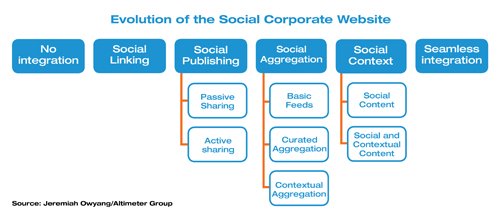In a world where information bombardment has become the norm, businesses are constantly searching for innovative ways to cut through the noise and deliver their messages effectively. Enter seamless strategies, the new frontier in marketing automation that’s revolutionizing how brands communicate with their target audience. Harnessing the power of cross-channel automation, these game-changing techniques bridge the gaps between different platforms, ensuring a harmonious and unified brand experience. With creativity at its core and neutrality in its tone, this article dives deep into the enchanting world of seamless strategies, exploring how they can elevate your marketing efforts to unprecedented heights. So, fasten your seatbelts and get ready to embark on a thrilling journey where automation meets artistry! 

In today’s fast-paced digital era, creating a cohesive brand experience is crucial for businesses. The power of seamless strategies lies in their ability to unite various marketing channels and touchpoints, ensuring that a brand’s message is delivered consistently and coherently. With cross-channel automation, businesses can explore new avenues and unleash the full potential of their marketing efforts.rnrnHarnessing the synergy between seamless strategies and cross-channel automation is the key to achieving maximum impact. By integrating messages across different platforms, brands can effectively reach their target audience wherever they may be and create a seamless journey for their customers. This integration allows for a more personalized and tailored experience, making customers feel valued and understood.rnrn rn
rn rnRecommendations for implementing seamless strategies and cross-channel automation include:rnrn1. Conduct a thorough audit of your current marketing channels and touchpoints to identify gaps and inconsistencies.rn2. Develop a unified brand voice and messaging that can be easily adapted across different channels.rn3. Invest in automation tools and systems that can streamline and simplify your marketing processes.rn4. Create a comprehensive content calendar to ensure consistent messaging and timing across channels.rn5. Continuously monitor and analyze your campaigns to make data-driven decisions and optimize your strategies.rnrnBy following these recommendations, businesses can embark on a journey towards unifying their brand messages with cross-channel automation, effectively enhancing their brand experience and driving meaningful engagement with their customers.
rnRecommendations for implementing seamless strategies and cross-channel automation include:rnrn1. Conduct a thorough audit of your current marketing channels and touchpoints to identify gaps and inconsistencies.rn2. Develop a unified brand voice and messaging that can be easily adapted across different channels.rn3. Invest in automation tools and systems that can streamline and simplify your marketing processes.rn4. Create a comprehensive content calendar to ensure consistent messaging and timing across channels.rn5. Continuously monitor and analyze your campaigns to make data-driven decisions and optimize your strategies.rnrnBy following these recommendations, businesses can embark on a journey towards unifying their brand messages with cross-channel automation, effectively enhancing their brand experience and driving meaningful engagement with their customers.
Q&A
Q: What is cross-channel automation and why is it important in seamless messaging strategies?
A: Cross-channel automation is the process of leveraging technology to deliver consistent and unified messages across various communication channels. It involves using sophisticated software and tools to automate messaging workflows, ensuring a seamless experience for customers. This approach is crucial in today’s digital landscape, as businesses strive to connect with customers across multiple platforms and devices.
Q: How does cross-channel automation help businesses deliver a consistent message?
A: Cross-channel automation allows businesses to synchronize their messaging efforts across different channels, such as email, social media, mobile apps, and more. By automating the delivery and timing of messages, companies can ensure a consistent brand voice and messaging strategy throughout the customer journey. This unifies the communication approach and helps to strengthen brand identity and recognition.
Q: What are the key benefits of implementing cross-channel automation in messaging strategies?
A: Implementing cross-channel automation brings several advantages for businesses. First and foremost, it eliminates the risk of inconsistent and disjointed messaging by ensuring a unified approach across all channels. This leads to increased customer engagement, as messages become more relevant and personalized. Additionally, cross-channel automation can save companies time and resources by streamlining workflows and reducing manual efforts.
Q: Can you provide examples of successful cross-channel automation in messaging strategies?
A: Certainly! One example is a retail brand that uses cross-channel automation to deliver personalized product recommendations to customers via email, mobile notifications, and social media ads. By leveraging customer data and automation tools, they can deliver tailored messages across different channels, resulting in higher conversion rates and customer satisfaction. Another example is a travel company that automates its communication to send booking confirmations, flight updates, and personalized travel recommendations through various channels, creating a seamless experience for travelers.
Q: What challenges do businesses face when implementing cross-channel automation in messaging strategies?
A: While cross-channel automation offers numerous benefits, it’s not without challenges. Integration of different systems and platforms can be complex, requiring businesses to ensure compatibility and data synchronization among various tools. Furthermore, maintaining consistency in messaging across diverse channels demands careful planning and the development of a cohesive messaging strategy. Finally, businesses must also take into account customer preferences and privacy concerns to ensure their messages are well-received.
Q: How can businesses get started with cross-channel automation in their messaging strategies?
A: To begin implementing cross-channel automation, businesses should first evaluate their existing communication channels and identify areas that can benefit from automation. Next, they should invest in a comprehensive automation platform or software that supports multi-channel integration. It’s crucial to define clear objectives and create a messaging strategy that aligns with the brand’s identity and customer preferences. Lastly, continuous monitoring, data analysis, and optimizations should be conducted to maximize the effectiveness of cross-channel automation efforts. In a world where communication is constantly evolving, it is crucial for businesses to adapt and embrace seamless strategies that unify their messages across various channels. Cross-channel automation has emerged as a game-changer, empowering organizations to streamline their communication processes and connect with their target audience in a more cohesive and impactful way.
By harnessing the power of cross-channel automation, businesses can transcend traditional barriers and deliver a seamless experience to their customers. Gone are the days when reaching out to consumers meant navigating through countless platforms and juggling multiple messages. With the right automation tools in place, businesses can synchronize their marketing efforts effortlessly, ensuring that their messages always resonate with their audience, regardless of the channel they choose to engage with.
One of the key advantages of cross-channel automation is its ability to provide a consistent and unified brand experience. Whether it’s through social media, email marketing, or even good old-fashioned direct mail, automation allows businesses to create a cohesive narrative that strengthens their brand identity. This consistency not only creates trust and loyalty among customers but also sets the stage for long-term success in an increasingly competitive market.
Moreover, cross-channel automation enables businesses to leverage the unique strengths of each platform they utilize. With the ability to tailor messages specifically for each channel, organizations can optimize their communication strategies for maximum impact. From personalized emails that resonate with individuals to engaging social media campaigns that capture attention, cross-channel automation empowers businesses to deliver the right message, at the right time, through the right channel.
However, it is essential to remember that cross-channel automation is not a one-size-fits-all solution. Each business has unique needs and must carefully consider its target audience, industry, and overall marketing objectives. The key lies in finding the right balance between automation and human touch. Striking this equilibrium ensures that automation enhances, rather than replaces, human creativity and intuition, resulting in a truly powerful communication strategy.
In conclusion, seamless strategies, powered by cross-channel automation, have become a necessity in today’s fast-paced business landscape. By unifying messages across multiple platforms, businesses can craft a consistent and compelling brand narrative that connects with their audience on a deeper level. With the right automation tools and a thoughtful approach, organizations can elevate their marketing efforts and build long-lasting relationships with their customers. As technology continues to evolve, embracing cross-channel automation will be the key to staying ahead and thriving in an ever-changing digital world.

